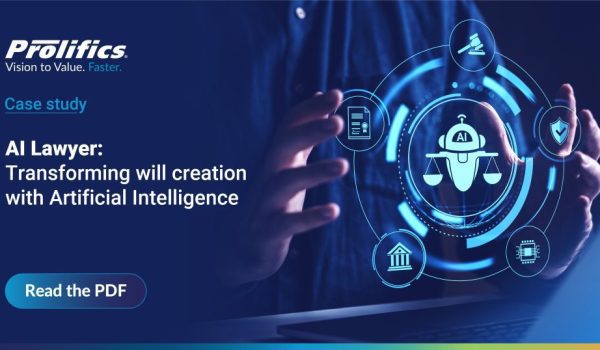Our Client
Is a large consumer package goods (CPG) company and a leading producer and seller of meat products, with recognisable national brands.
Challenge
Our client wanted to modernise and integrate its legacy systems, including a move to the cloud. The client had two major business reasons for this: reduce the amount of manual work within its processes, and reduce the costs of legacy, on-prem software licensing costs.
Action
Prolifics originally “stepped into the shoes” of another provider that had to withdraw from the engagement. At that point, the client and the previous provider were addressing one project – facility access control within facilities engineering services, part of its human resources (HR) systems. We created an interface that controlled whether a particular employee was authorised to work in certain areas, like a warehouse.
We then worked with our client to develop other HR-related applications that they wished to focus on. This included the movement of HR data and communications (e.g., push notifications) to a large, dispersed workforce with a variety of devices. The client wanted to be able to notify all employees at the same time. We integrated employee records with a chat tool that sent SMS to their employees at once.
Having executed this early HR work well, Prolifics began new projects as the client’s provider of choice. This second round of modernisation and integration consisted of interfaces coordinating and ensuring the product shipment from their warehouses based on their customers’ orders and requirements. The company’s current integration was very “point-to-point,” along with aging electronic data interchange (EDI) processes. As an example, if there were 10 different shippers from the client warehouse, under the previous point-to-point there would be 10 different interfaces.
This is a complex and inefficient set-up. Every time the client needed a new integration (e.g., a new shipper), they would have to manually create a connection between it and every other system. If a system changed what data it needed or what data it supported, the client needed to upgrade that system and all the related integrations. The client wanted all of that to be more streamlined.
Prolifics implemented the streamlined, more modern approach by using application programming interfaces (APIs) and gateways, creating a hub for integration. With this, we brought in the concept of reusability. Taking the example above, the 10 original point-to-point interfaces are basically doing the same thing. Reusability means looking for a way to make one interface with the business logic that accommodates all 10 of the shippers. That is, shrinking down all the complexity into a more streamlined, rule-based driven interface as opposed to hard-coded connections.
This would work with every system – instead of talking to every other system and exchanging specific data, each system now has an API where it basically offers its information as a service, which anyone can access and use. So, rather than hundreds of point-to-point connections, each system has an API. This was the real modernisation Prolifics provided our client: taking their legacy environment and implementing an API gateway. Currently in the engagement, Prolifics is working on about 120 interfaces for our client.
Because Prolifics and our client are identifying and building out these integrations rapidly, Prolifics has created an outsourced development team. This group works with the business units to figure out what’s needed next; manages and develops these new integration use cases; and builds out those new applications.
In addition, to assist the client and ensure that all new integrations continue to run smoothly, Prolifics and our client have a managed services agreement is place. This team is on 24/7 standby, keeping the infrastructure running, making sure the trucks move on time, and making sure all the integration applications are running as intended. This is especially important to our client, for as a food distributor there are specific government regulations that the client must comply with, such as refrigeration temperatures, wait times and other handling requirements.
Results
Our client has seen the following benefits:
- Reduction in “technical debt” by migrating away from legacy systems
- Ability to pivot and react quicker to customers’ needs and market changes
- Cost savings through lower legacy licensing fees
- Less manual effort within processes
- Greater efficiency in HR communications and processes
- More efficient and predictable use of IT spend through managed services and managed development
- Ability to access and scale different IT expertise through managed services and managed development
We’ve received extremely high satisfaction scores from our client, which, coupled with our expertise and experience, has opened up opportunities for new work. One new area involves low-code application development within the client’s IT organisation.
Technology
The client is migrating off their legacy platform, IBM Sterling Integrator, using Boomi as the interface platform along with IBM API Connect.
Boomi is a software company that specialises in integration platform as a service (IPaaS), API management, master data management and data preparation.
Part of IBM’s Cloud Pak for Integration, IBM API Connect is an integrated API management offering, with capabilities and tooling for all phases of the API lifecycle, including “create, secure, manage, socialize, and analyse.” IBM API Connect allows users to create, manage, and secure applications across a variety of on-premises and cloud environments.
Prolifics Integration, Middleware and API Services
We’re a trusted advisor to some of the world’s largest organisations, boasting a portfolio of successful integration projects. Find out how our integration, middleware and API practice can assist you in reaching your digital transformation goals.








